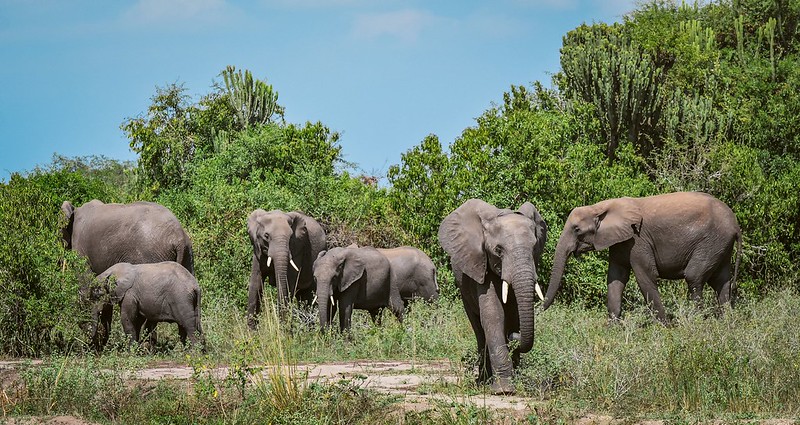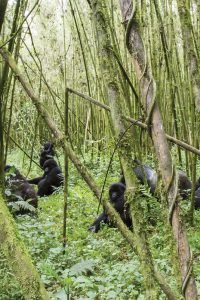Wild animals guide for Uganda.
A wide range of wild creatures, including the Big Five lions, leopards, elephants, rhinos, and African buffalos and iconic species like chimpanzees and mountain gorillas, may be found in Uganda’s complex ecology. Other noteworthy creatures include carnivores like leopards and tree-climbing lions, antelopes like the Uganda kob, and several monkeys. Wild animals guide for Uganda.
How many wild animals are in Uganda?
Approximately 345 mammal species, 1,020 bird species almost half of all those in Africa, 142 reptile species, 86 amphibian species, 501 fish species, and 1,242 butterfly species have been identified in the nation.
Where do wild animals live?
The natural habitats of wild animals include forests, deserts, mountains, seas, and even urban areas. While some animals construct their own houses, others discover them in the wild. Along with a location to store food, these houses offer security, shelter, and a space for reproduction.
What is the role of the wildlife Authority in Uganda?
Uganda Wildlife Authority uses a variety of tactics to manage and protect animals in a sustainable manner. These include collaborative management, problem animal management, income sharing, wildlife use rights, conservation education, and awareness-raising, as well as community involvement in wildlife management. Wild animals guide for Uganda.
What qualities distinguish a wild animal?
Another trait of wild animals is their ability to enhance one another with plants in order to maintain the ecosystem and continue life cycles. The reason these creatures are referred to as wild is since they are untamed and cannot coexist with people.
Which twenty wild creatures are the most popular?
Elephant.
Tiger.
Dolphin.
Lion.
Whale.
Giant Panda.
Giraffe.
Penguin
Polar bear
Kangaroo
Zebra
Gorilla
Cheetah
Rhino
Brown bear
Chimpanzee
Hippopotamus
Giant tortoise
Turtle
Shark
Why is Uganda’s wildlife so important?
Uganda’s economy, ecological balance, and tourist sector all depend heavily on its wildlife. It encourages tourists, which boosts the economy greatly, especially when it comes to pursuits like monitoring mountain gorillas. Additionally, wildlife supplies local populations with resources and is essential to the upkeep of healthy ecosystems.
Were you aware of the facts regarding wild animals?
Animals are more feared by people than lions. Various studies have revealed that the human super predator is significantly more feared by animals worldwide than some of the most well-known predators, such as wolves, bears, and leopards. Thirty-one Oddly enough, moles are the finest sniffers in the animal kingdom.
10 facts about wild animals.
The only terrestrial animal incapable of jumping is the elephant.
Three hearts are found in octopuses.
Flamingos have gray feathers from birth.
Sloths only urinate once every seven days.
Sea otters sleep with their hands clasped together.
Crows possess extraordinary intelligence.
Dolphins give each other names.
Backward walking is impossible for kangaroos.
Tigers are lonesome animals.
The swiftest creatures on land are cheetahs.
Which wildlife tourism case is the most well-known?
Safaris are the most popular type of wildlife tourism. Travelers tour national parks and specific conservation areas by foot or by automobile. In many locations, trained rangers are paid with park admission fees to keep the animals safe from poachers.
How can tourism aid in the preservation of species and areas that are at risk?
Tourism can benefit local communities, provide money for conservation initiatives, and provide strong incentives to protect environment and culture by increasing awareness and producing income.Wild animals guide for Uganda. A destination’s natural beauty or biodiversity is frequently valued economically, which makes it worthy of preservation.
Where do we find wild animals in Uganda?
Wild animals may be found at Lake Mburo National Park, Queen Elizabeth National Park, Kidepo Valley National Park, and Murchison Falls National Park in Kabale, Uganda. There are great chances to see wildlife in these places.
What does Uganda’s Wildlife Act mean?
This legislation aims to create a coordinating, monitoring, and supervisory body for wildlife management, provide for sustainable wildlife management, and address other issues related to or associated with the aforementioned.
Conclusion about Wild animals guide for Uganda.
Uganda is a country with a rich and diverse wildlife, offering unique opportunities for observation and engagement. The success of wildlife conservation in Uganda depends on collaborative effort between government communities and international partners to address ongoing challenges like human wildlife conflicts and habitant loss.




